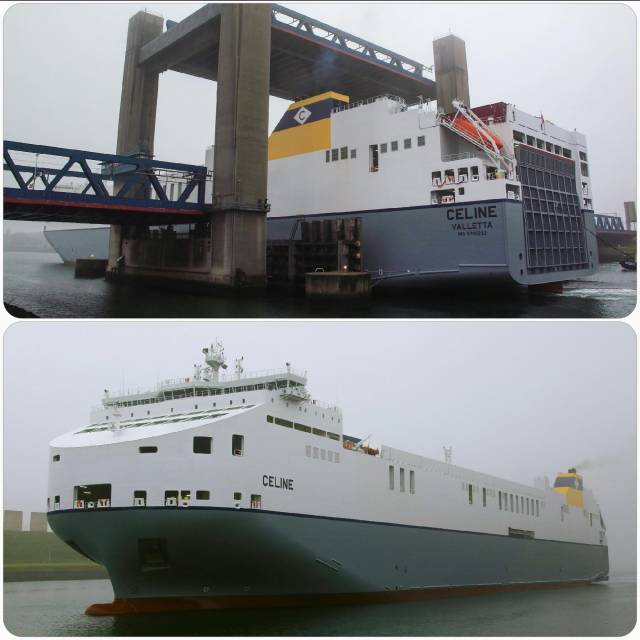#WorldLargest - As Afloat.ie reported on Monday, the World's largest ro-ro freight ferry is to make a maiden call to Dublin Port however the giant newbuild made a debut call to Rotterdam yesterday following a delivery voyage, writes Jehan Ashmore.
Operator, CLdN ro-ro SA (Cobelfret Ferries) welcomed MV Celine from a South Korean shipyard to the Dutch port from where freight traffic will use the newbuild's 8000 lane meter capacity. In addition the 234m long by 38m beam ship will be the biggest ever ro-ro vessel to use Dublin Port that will also operate from the Belgium port of Zeebrugge.
As of this morning the newbuild is currently berthed in Zeebrugge from where the ship is to sail from to the Irish capital.
M.V. Celine is easily the largest shortsea roro vessel that the Luxembourg based company has commissioned. In appearance the vessel is more akin to a modern car-carrier compared to the designs of her precedessors that were based more on open-decked freight ferries, except for some ships series of recent years.
According to the Dublin Port Company, Celine can carry over 600 freight units and is approaching twice the size of the largest ferry currently operating of the port. Afloat adds this is in reference to Ulysess, Irish Ferries giant cruiseferry serving Holyhead.
Also announced yesterday by Dublin Port, record volumes which are 30% up in five years. The port company also highlighted the newbuild Celine, notably given this newbuild will boost capacity due to demand on direct continental services and as Afloat previously alluded the context of a post-Brexit Europe.
The environment of Brexit is creating uncertainty commented Eamonn O’Reilly, Chief Executive, Dublin Port Company who added that the port is to see more new services to continental Europe during 2018.
To recap from figures released by DPC, the Ro-Ro sector reported particularly strong growth with 736,462 freight units in the first nine months, an increase of 5.3% on the previous year. Within this total, Ro-Ro services between Ireland and Britain grew strongly at 6.2%.
The volume of new imported trade vehicles however have declined by -5.5% during the period, reflecting the large increase in recent times of second-hand vehicle imports from the UK.































































